By Alisha Verly-Jensen and Krista Kurlinkus
Every year, two of the major players in the grantmaking world, Candid and GrantStation, release their industry reports, covering the most notable trends in philanthropy and nonprofit work, and how this impacts grantseekers.
Candid, formerly known as the Foundation Center, compiles basic data about nonprofits and foundations into its “Key Facts” annual report. Comparing year-over-year results can give us insight into the grant writing landscape.
According to Candid, there are more than 1.8 million registered nonprofits in the United States and its territories. The vast majority of these organizations are public charities, which means they can potentially qualify for grant funding.
Most nonprofits are small and have an annual revenue of under $99,000. While most nonprofits raise their revenue from program fees, nearly 1 out of 5 have received a grant.
These figures show that the need for grant funding, and therefore, the need for professional grant writers remains strong.

Candid also examines the giving strategies of private and community foundations. Foundations are the second largest source of funding for nonprofits, just behind individual contributions.
Giving from private foundations has increased year over year since 2013.
In 2020, private foundations funded more than $90 billion in grants. This suggests that nonprofits should invest in both fundraising efforts and grant writing to private foundations to increase their revenue or diversify their revenue.
Let’s take a deeper dive into how foundations select their grantees.
The most popular grantees run programs in education, community and economic development, and healthcare.
Foundations are most eager to fund programs or organizations that benefit economically disadvantaged groups and children. In 2020, nearly a quarter of grants over $10,000 were awarded to organizations working abroad, and almost 20% of private foundation grants funded capacity building, advocacy, and systems reform.
While foundations differ on the types of organizations they fund, in general, institutions such as elite colleges and donor-advised fund providers tend to receive the lion’s share of grant funding. Before applying for a foundation grant, it is important to research past grantees and see if your nonprofit’s capacity, scale, and impact aligns with the profile of a typically funded organization.
Grantstation, the grant database and grant management provider, also published the findings of its 2020 survey of nonprofits in its “The State of GrantSeeking” report.
They found that while the percentage of respondents that applied for grants remained unchanged between 2019 and 2020, 10% more respondents reported receiving an award in 2020.
They also note, that as in previous years, submitting more grant applications typically aligned with a higher chance of receiving funding. Nearly 100% of respondents who submitted more than six applications were awarded at least one grant.
More than three-thirds of grant recipients reported an expedited funding process and received funding within three months of accepting the award.
Nearly half of those surveyed received large grants. However, the median award decreased slightly from $196,925 in 2019 to $150,000 in 2020. When broken down by organization size, small organizations won a median award of just under $10,000, while half of the largest organizations received more than $4 million.
Private foundations awarded the most grants overall, but didn’t hold true for every sector. Organizations focused on housing and homelessness received most of their funding from federal grants.

Nonprofits consistently report difficulty finding grants and time management as two of the biggest challenges in their grantseeking approach.
In the 2019 report, most respondents spent up to 14 days going through the grantseeking cycle, including research, creating a strategic plan, writing the grant, and the submission processes.
This aligns with our experience, but getting certain types of documentation, especially from third-parties, can take much longer. The best rule of thumb is start the grant process as soon as possible.
Of course, COVID-19 made its mark on both grantmaking and grantseeking.
According to GrantStation, nonprofits pivoted to virtual fundraising events, which resulted in lower than average revenues. On the other hand, grantmakers adapted to emerging needs.
More than 50 percent of funders either extended their timelines or shifted funding guidelines to match the most-pressing needs. More than 65% of respondents who applied for COVID-19 related funding received an award.
The Candid “Philanthropy and COVID-19” report noted that 35% of COVID-19 grants were earmarked for communities of color, which were disproportionately impacted by the pandemic. Another COVID-19 related trend was an increase in unrestricted funding. If this strategy continues, it would be a welcomed development for many nonprofits who can struggle to find program restricted funding.
Key Takeaways from 2020
- Grants remain an extremely viable funding option for nonprofits of all sizes. However, grants are a time commitment and must be planned accordingly.
- Submitting multiple applications increases funding odds. Take into consideration the foundation’s past grantees, mission, and values.
- Consider incorporating private foundations into your grantseeking strategy.
- If your nonprofit works in a sector that is currently high on the political agenda, such as housing, education, or economic development, consider applying for federal grants.
Our comprehensive, self-paced online course, Grant Writing Made Easy, will teach you everything from the basics of grant writing for novices to advanced grant revision for experienced writers.
What’s Different about Grant Writing Made Easy
- It gives you both no-fluff instructional videos + the workbooks and templates you need to implement everything we teach you.
- It helps you get clarity on what’s important and how to do everything from simple tasks to complex research and writing
- It gives you immediate access to the course and all updates to the course content (hello, new free info!).
- It focuses only on the most actionable, immediate, effective means of getting your grant submitted.
- It provides a systematic way of getting your work done, actually helping you complete it, so you’re not left trying to implement lessons without help.
- It gives you access to a community of grant writers around the country (and some in other parts of the world), who will support you, answer your questions, and help you with your writing.
- In addition to the static content on the site, we now host live writing workshops twice a month. One workshop focuses on a specific module of the course, and the second workshop provides assistance to any course member who needs help with their writing. (Yes, we do live reviews and revision during this workshop!)
- It’s designed and taught by an instructor who is a practicing grant writing consultant, holds a Ph.D. in Rhetoric and Writing, and has 6+ years of experience teaching university writing. That’s a unique combination of skills and experience that you won’t find anywhere else.
Sources:
The 2021 State of Grantseeking Report
The State of Grantseeking Key Findings
Philanthropy and COVID19 Candid
Key Facts on U.S. Nonprofits and Foundations 2021 Candid
Key Facts on U.S. Nonprofits and Foundations 2020 Candid









Ronnell Showell
August 31, 2021 12:14 pmKrista,
Excellent information; Thank you so much!